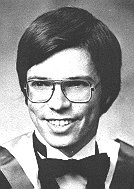Maurice A. Tivey

B. Sc. Honours Thesis
Experimental Investigations of Viscous Remanent Magnetization Using a Continuous Measurement System
(PDF - 2.6 Mb)
This study showed that with a simple circuit modification this new continuous measurement system of viscous remanent magnetization (VRM) can be made more flexible as a far as the magnitude of the applied field and VRM response are concerned. It also became evident that samples ought to be allowed to decay in a zero field for 24 hrs. prior to experimentation. The IRDP rocks showed two types of VRM behaviour i) a linear logt relationship ii) a linear logt relationship but with a distinct increase in slope at about 2 x 104 secs. Why this occurs is not clear, it may be due to experimental conditions or more likely due to some physical property of the rock. The Bermudan rocks in general showed no relationship with time, but this is probably due to their past experimental history. The determination of susceptibility using this apparatus is relatively quick and produced precise results. However care must be taken with rocks that acquire a viscous moment rapidly i.e. large viscosity coefficients.
Keywords:
Pages: 65
Supervisors: James Hall
A Few Words From Maurice A. Tivey
from Earth in Space - September 1997
I was born in the United Kingdom in 1957, and because my father was in the Royal Navy, I traveled and lived around the world. When I was 18, my family and I emigrated to canada where I attended Dalhousie University in Nova Scotia, Earning a Bachelor of Science with honours in geology in 1979.
My interest in science began in high school, where I enjoyed geology field trips and also liked tinkering with physics experiments. My father advised against a seagoing career so I decided geology was a good land-based profession. When I went to the University of Washington, my thesis advisor just happened to be in the Oceanography Department and it wasn't too long before I was on my first research cruise. I have now been involved with over 22 cruises!
I attended graduate school at the University of Washington in Seattle, Where I performed research on the magnatism of rocks and obtained a Master of Science degree in oceanography in 1981. I then worked for the oil exploration industry in Canada for several years before returning to graduate school at the University of Washington in 1984. I completed my Ph. D. research on sea-floor magnetism in 1988 and joined the scientific staff at Woods Hole Oceanographic Institution (WHOI). I am currently an Associate Scientist in Geology and Geophysics Department at WHOI.
My current research seeks to investigate the magnetism of deep crustal rocks and to determine if their magnetic properties can explain some of the magnetic patterns we see in the ocean floor. In 1998, I will be traveling to the Indian Ocean to study a steep cliff that exposes a large cross section of deep ocean crust - perhaps even the upper mantle. We will use a remotely operated vehicle and a small drill system to carry out our studies. We will then return with a submarine and dive to the bottom of the cliff at almost 6500 metres depth.
My advice to aspiring scientists is to persevere in your studies. Sometimes what you are learning doesn't seem to be of practical use, but later on you will be glad you learned the material. Don't be afraid of asking questions or of not getting the right answer on the first try. Science is about exploring idesa and only by exploring these ideas can you learn what works and what doesn't. Science is not for everyone, but even if you go into business or some other career, it is important to be able to make informed decisions about science issues that effect everyone.



